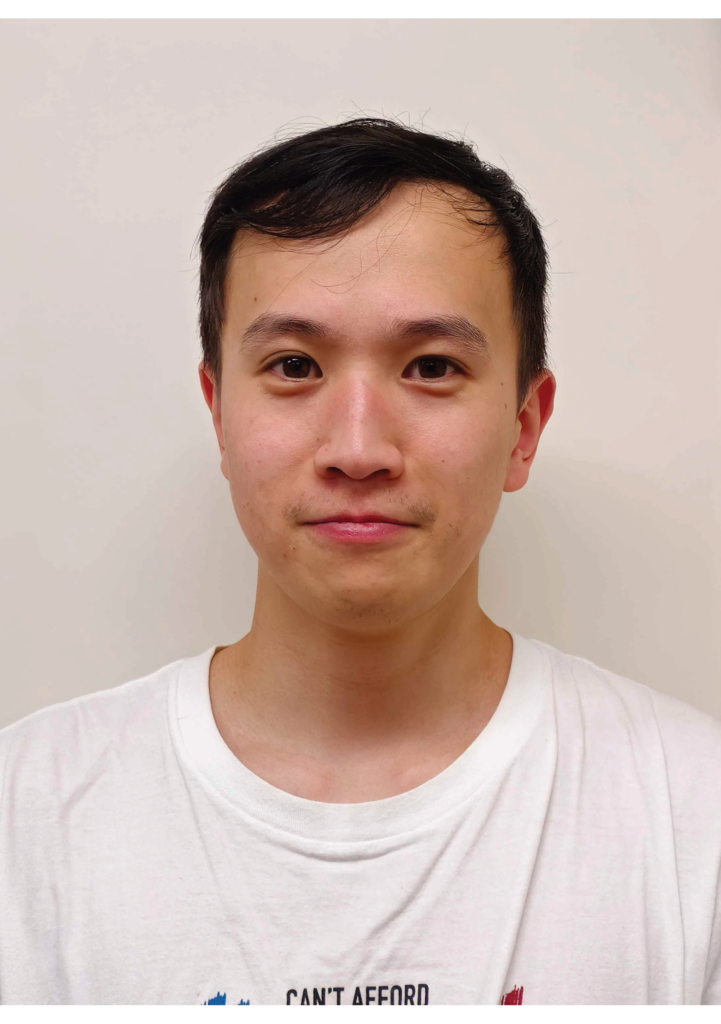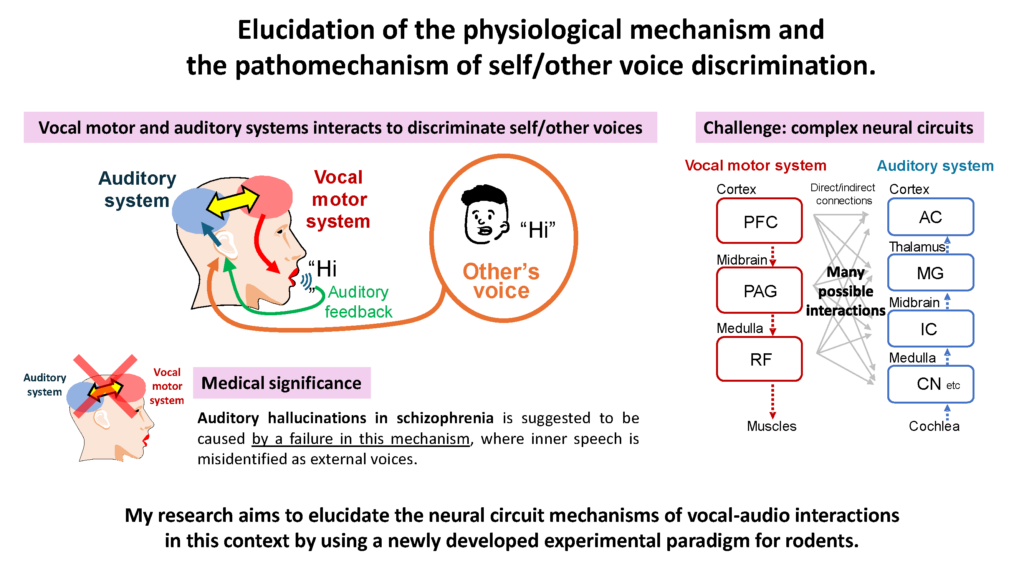自己紹介・研究目的
令和7年4月入学/ ■SPRING事業 採択学生紹介

認知・情動脳科学プログラム
令和7年4月 大学院入学
Amarbayasgalant Badarch
アマルバヤスガランタ バタラチ
Elucidation of the physiological mechanism and the pathomechanism of self/other voice discrimination.
I am Amarbayasgalant Badarch, a doctor-course student in the Cognitive and Emotional Neuroscience Program, Graduate School of Pharma-Medical Sciences. I am conducting my research in the System Emotional Science Laboratory.
My research focuses on the neural basis of self/other voice discrimination. In everyday conversation, a person hears both their own voice and the voices of others. The ability to distinguish between them is fundamental for normal communication. It has been suggested that this discrimination relies on comparing incoming auditory signals with internal predictions generated by the vocal motor system. Notably, auditory hallucinations in schizophrenia may reflect a failure in this mechanism, where inner speech is misidentified as external voices.
Despite its significance, few studies have investigated neural circuit mechanisms of vocal-audio integration for self/other discrimination using mammalian animal models. Additionally, there are many potential circuit pathways across different levels of the vocal motor and auditory systems. My research aims at elucidating the neural circuit mechanisms of vocal-audio interactions in this context using a newly developed experimental paradigm for rodents.
My research focuses on the neural basis of self/other voice discrimination. In everyday conversation, a person hears both their own voice and the voices of others. The ability to distinguish between them is fundamental for normal communication. It has been suggested that this discrimination relies on comparing incoming auditory signals with internal predictions generated by the vocal motor system. Notably, auditory hallucinations in schizophrenia may reflect a failure in this mechanism, where inner speech is misidentified as external voices.
Despite its significance, few studies have investigated neural circuit mechanisms of vocal-audio integration for self/other discrimination using mammalian animal models. Additionally, there are many potential circuit pathways across different levels of the vocal motor and auditory systems. My research aims at elucidating the neural circuit mechanisms of vocal-audio interactions in this context using a newly developed experimental paradigm for rodents.


